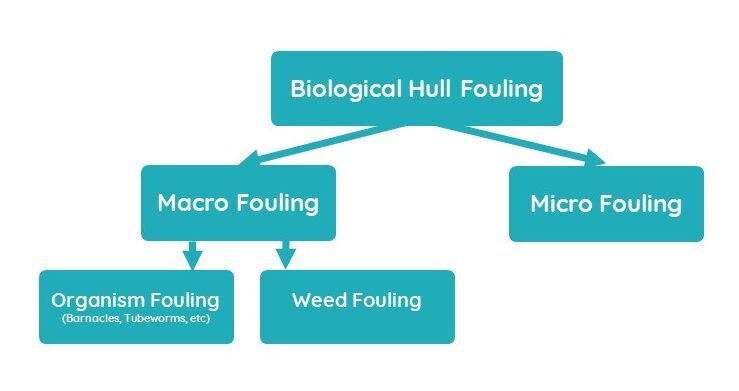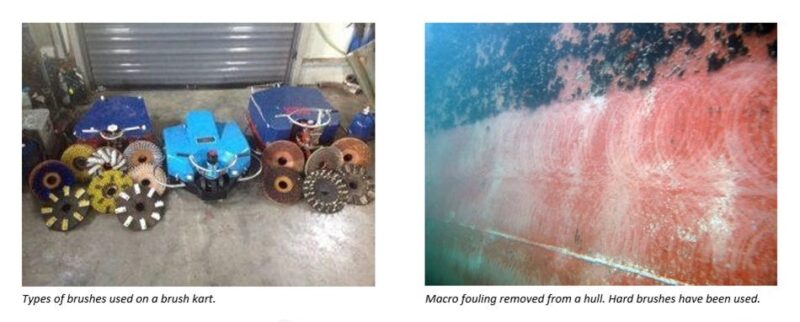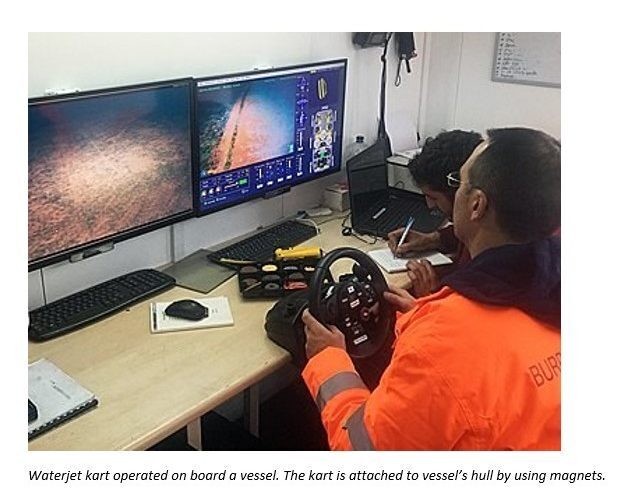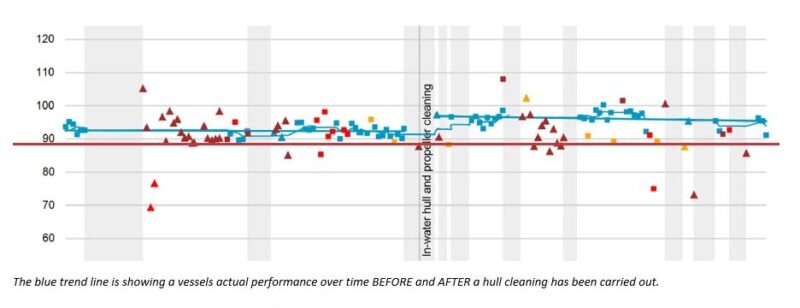



Hull fouling is one of the most common reasons why a vessel is underperforming as it is having a detrimental impact on a vessel’s hydrodynamic performance and hence the relationship between speed and fuel consumption.
Besides having a financial negative impact on a ship owner, it also has a negative impact on the environment since fouling is causing additional fuel consumption.
Let´s first have a look at what fouling is. When a vessel is leaving a shipyard as a newbuilding or after a drydocking the bottom of the vessel has been coated with an anti-fouling paint which makes it much harder for the vessel to be fouled. However, the anti-fouling paint will generally only be active when the vessel is sailing due to the water flow around the vessel. When a vessel is idle the anti-fouling paint will no longer have a significant effect.

Micro fouling will often disappear once the vessels start sailing again and the anti-fouling paint is activated, however this is not the case with macro fouling. It needs to be removed with hull cleaning.
Hull cleaning is normally carried out by experienced diving companies which have the knowledge and equipment for such operation. When the cleaning is being carried out it is very important not to damage the anti-fouling paint by using excessive force. As a “rule of thumb” a vessel can be cleaned 2-3 times before the anti-fouling paint loses its effect or is worn off entirely
The hull cleaning operation is carried out by using specialized equipment – typically by using a “brush kart” or a “waterjet kart”.
A “brush kart” is operated by a diver and it is normally powered by a electric hydraulic power pack, powering two or three brushes depending on which area of the hull that has to be cleaned. Depending on the type of fouling and painting various types of brushes are being used. Brushes range from soft silicone brushes to a combination of hard silicone and steel wire brushes when extreme hard and large barnacles need to be removed.

Machines using waterjets is the newest way of cleaning a hull. The water pressure is adjusted according to the fouling type allowing for an effective cleaning and at the same time with least possible damage to the anti-fouling paint. A “waterjet kart” is controlled by a land or ship-based operator who are using cameras mounted on the cleaning machine to control and direct the “waterjet kart”

Example of a hull cleaning performed by using a brush kart:
https://www.youtube.com/watch?v=pN1kGrV8CqI
The Coach Solutions vessel performance software can advise you of the current hull performance of a vessel allowing you to determine when it is time to make a hull cleaning.
The Performance Team from Coach Solutions will create what we call a “digital twin”. We call this performance indicator “speed percentage” and it describes how a vessel should be able to perform in optimal conditions with no fouling. This data is compared with actual performance data deriving from noon reports and any variance will be categorized as a performance loss.
Our vessel performance software determines if and by how much a vessel is under performing and calculates how much fuel and emissions you will be able to save if a proper hull cleaning is carried out.

The above graph is showing a vessel’s actual performance over time (the blue trend line) A “speed percentage” of 100% is based on optimal hull performance of a vessel. The left side of the graph is showing that the performance of the hull decreases over time from 93% to 90% before a needed hull cleaning is carried out.
The right side of the graph shows the immediate and obvious effect of the hull cleaning. The hull performance is improved from 90% prior to 98% after the hull cleaning.
A vessel with a 10% hull under performance is by “rule of thumb” using up to 25% to 30% more fuel – i.e., a vessel using 50 metric tonnes of fuel per day with no fouling is using 12-15 metric tonnes of fuel extra per day with a 10% hull under performance. With today’s bunker prices this example is resulting in a daily loss of USD 6,000-7,500! This is not petty cash….